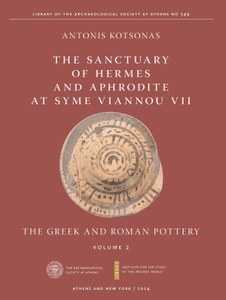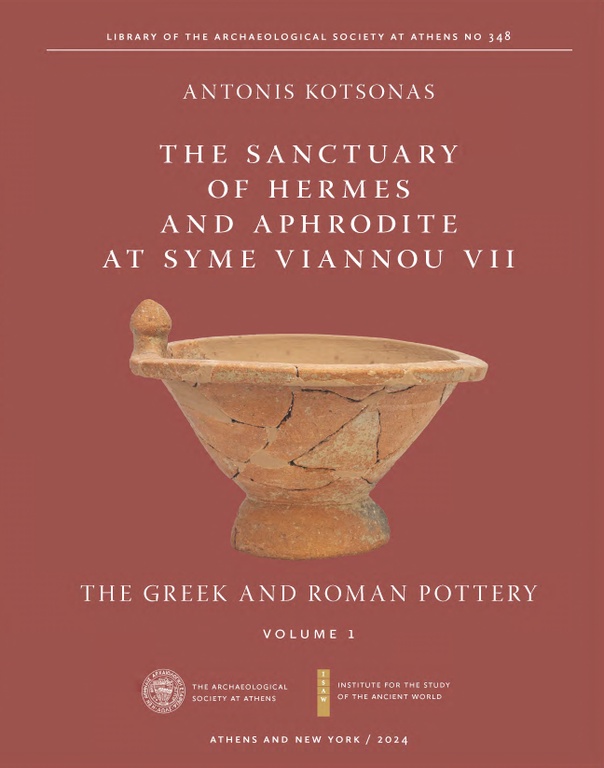The Sanctuary of Hermes and Aphrodite at Syme Viannou VII: The Greek and Roman Pottery
- by: Antonis Kotsonas
- Volume 1, February 15, 2024
- ISAW/NYU Press and the Archaeological Society of Athens
- ISBN: Vol. 1: 9781479830046 (hardcover), 9781479830343 (ebook); Vol. 2: 9781479830053 (hardcover), 9781479830367 (ebook)
The Sanctuary of Hermes and Aphrodite at Syme Viannou VII: The Greek and Roman Pottery presents in two volumes the Greek and Roman pottery recovered from the excavation of the sanctuary of Syme Viannou, one of the most long-lived and important cult sites of ancient Crete and the Aegean. The site, which is known as the Cretan Delphi, was dedicated to Hermes and Aphrodite for much of its history. The present study analyzes and catalogs 865 pieces, dating from across the early first millennium BCE to the mid-first millennium CE. Kotsonas integrates traditional typological and chronological inquiries with contextual considerations, macroscopic and petrographic analyses of ceramic fabrics, and quantitative studies. The resulting work provides detailed documentation of the pottery from Syme Viannou and explores its ritual and other roles within the diachronic panorama of cultic and other activities at the site. It also contributes to a broader understanding of the role of ceramics in sanctuary contexts by introducing systematically comparative perspectives on the evidence of pottery from other Cretan and Greek sanctuaries.
Volume 1 provides an introduction to the site of the sanctuary of Syme Viannou and its history, and contains an analytical catalog of the ceramic remains.

This is the seventh volume in the publication series of the sanctuary of Syme Viannou, but the first to be published jointly by ISAW/NYU Press and the Archaeological Society at Athens (Library of the Archaeological Society at Athens 348). The Archaeological Society of Athens is a private, non-profit foundation dedicated to promoting the archaeology of Greece, founded in 1837 soon after the Greek War of Independence.
This book will be of interest primarily to archaeologists, ceramologists, and historians of ancient Greece and the Eastern Mediterranean.
ABOUT THE AUTHOR:
Antonis Kotsonas is Associate Professor of Mediterranean History and Archaeology at the Institute for the Study of the Ancient World, New York University. He has published widely on the material culture and socio-economic history of ancient Greece and the Mediterranean, as well as on the history of Greek and Mediterranean archaeology and the reception of Classical antiquity. He is co-director of the Lyktos Archaeological Project in Crete.

